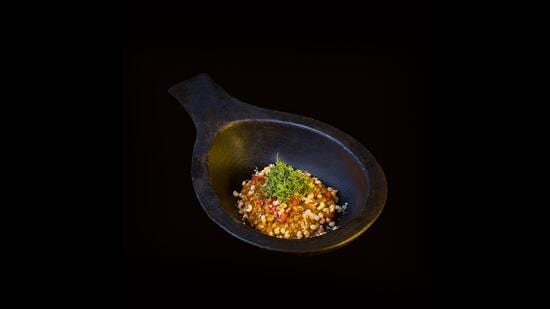This is no mean accomplishment! Once relegated to ‘chara’ (the fodder we serve to cattle), millets have been deservedly nicknamed ‘desi superfood’. Owing to their super versatile nature, the mildly nutty and sweet grains can happily replace rice or quinoa in recipes. Their subtle taste makes them an excellent flavour carrier for both savoury and sweet preparations. Add to this their climate resilience qualities and multiple health benefits, and you have an all-rounder that has made the world sit up and take notice.
Reclaiming millets
2023 is going to be a big year for millets. The United Nations has declared it as the International Year of Millets, after a proposal from Prime Minister Narendra Modi. The Union Government also organised a food festival and lunch at the Indian Parliament on December 20 to celebrate the grains.
One of the first crops to be cultivated in India, millets were consumed by the people of Indus or Harappan civilisation. Jhangora (barnyard millet), ragi (finger millet), bajra (pearl millet) and kangni (foxtail millet) have been a part of our diets since time immemorial and some of these find a mention in the Yajurveda texts. “While our ancestors believed in the power of millets, we sidelined it as primitive and rustic for a long time, such was our obsession with polished food,” says chef Manish Mehrotra. He calls millet ‘the food equivalent of yoga’. “Millets can do to the world what yoga has done! They are a great source of protein, fibre, key vitamins and minerals. With a low glycemic index, they are ideal for diabetes and weight management. One can uninhibitedly play around with their flavours and textures,” says Mehrotra, who loves whipping up a Bajra Parmesan khichdi at The Indian Accent.

Chef Sanjeev Kapoor is excited that PM Modi has made millets his pet project. “The only Guinness World Record that I created was for a khichdi made with millets! Be it jowar, bajra or even smaller millets like samai, proso or kodo, all the varieties are nutritional toppers and bring in amazing diversity in our diet. I’m glad that millets are getting their due. Kudos to the revivalists and the government!” he says.
Rajesh Wadhwa, executive chef, Taj Palace, New Delhi, says that the renewed interest in regional and hyperlocal cuisines, what we call ‘forgotten foods’ and an overall focus on well-being has helped boost the popularity of millets. “As part of our Innergise wellness experience, we serve a host of millet-based dishes such as Ragi Uttapam, Jhangora Curd Rice and Bajra Missi Roti,” he says.
Beyond boring
Chef Sana Naqvi, founder, Seeking Roots, a farm-to-fork concept, works closely with farmers to use millets imaginatively. She uses ragi, kuttu, jowar and jaggery to make laddoos and kodo flour for dosas. Millennials and Gen Z have the power to resurrect long-lost traditions and make them popular again, she believes. “One needs to engage with the younger generation in such revivals through creative dishes,” she says.
Pastry chef Kishi Arora is also mainstreaming the grains with dishes such as millet burgers, mixed millet cakes, millet beetroot tikkis, millet crackers and even croutons. “The possibilities are simply endless,” she says.
Millets have truly arrived!
Stay connected with us on social media platform for instant update click here to join our Twitter, & Facebook
We are now on Telegram. Click here to join our channel (@TechiUpdate) and stay updated with the latest Technology headlines.
For all the latest Food and Drinks News Click Here
